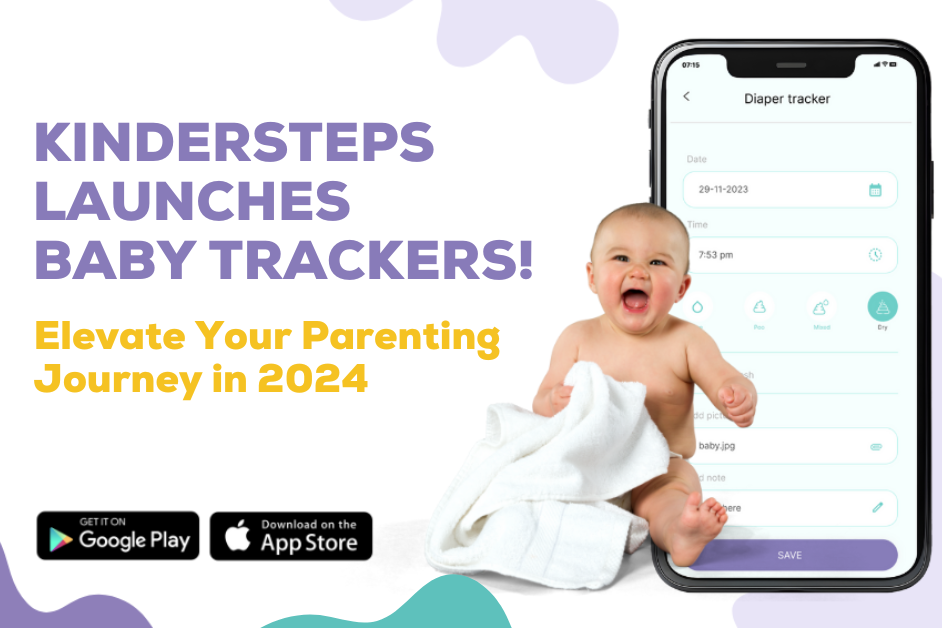Solid meals are an important aspect of your child's growth and development since they help babies learn to eat by exposing them to different tastes and textures from a variety of foods. Besides, it also aids in the development of their teeth, jaws and it builds other skills that they’ll need later for speech development.
Introducing solid foods gradually into your baby's diet assists the baby in slowly transitioning from milk to adult meals. However, it is vital to refrain from giving your baby solids before the age of 4 as this can cause allergies. But after around 4-6 months, nourishment from milk, whether formula or breast milk, is no longer sufficient for the child's nutritional needs, and hence solid foods must be added to the baby's diet.
But, deciding whether they're ready and how to proceed may be difficult. Here's everything you need to know about it.
Is your baby ready for the transition?
Other than age, look for other indications that show your baby is ready for solid foods. For example:
- Tongue-thrust reflex: It helps prevent newborns from choking, however, when a baby is ready for solids, the reflex reduces drastically allowing them to swallow food (instead of only liquids) easily.
- Unassisted head support: Babies must have good head and neck control and must also be able to sit up on their own in order to eat solid foods without choking.
- Demonstrating interest: Babies who lean forward during family meals, indicating a desire for food, are usually ready to start eating solid foods on their own.
Which food should I give my baby first?
When it comes to a baby's first food, there are no hard and fast rules. And in order to get your baby habituated to varied flavors, it is more crucial to feed a range of fruits, vegetables, and single grain cereals in any sequence. However, when introducing new meals to your children, it is essential to begin slowly and it’s a good practice to offer solids when your baby is happy and relaxed.
How to introduce solid foods to the baby?
- Introduce single-ingredient pureed vegetables and fruits with no added sugar or salt gradually. Between each new food, wait 3 to 5 days to check if the baby has an allergy to it such as diarrhea, rash, or vomiting. Later you can introduce them to different baby food combinations.
- Also include foods that are high in iron and zinc, such as meat-based baby food or iron-fortified cereals.
- Keep breastfeeding or using infant formula until your baby is at least 12 months.
- Try combining 1 to 2 tablespoons of a single-grain baby cereal plus 4 to 5 tablespoons (60 milliliters) breast milk or formula milk. Single-grain cereals include rice, oatmeal, ragi, and barley. Assist your infant to sit upright and provide the cereal with a small spoon once or twice a day. Begin by serving 1 or 2 teaspoons and slowly reduce the amount of liquid in the cereal and increase the serving sizes once you are sure your infant has mastered swallowing watery cereal.
- Offer small pieces of finely chopped finger foods such as soft fruits, vegetables, spaghetti, cheese, well-cooked meat, baby crackers, and dry cereal around the age of 8 to 10 months.
- Additionally, it is also important to introduce liquid food alongside solids like buttermilk, coconut water, fresh fruit juices, etc by the age of 8 to 10.
Foods that you should avoid
- Honey is sweet and natural, yet it may contain Clostridium botulinum bacteria spores, resulting in newborn botulism which can have serious consequences.
- Cow or soya milk could contain proteins that the babies cannot digest. Also, some babies may be lactose intolerant, causing allergic symptoms such as diarrhea.
- Citrus fruits like oranges or grapefruit are acidic in nature and can cause stomach upsets.
- Foods with choking risks like peanuts, popcorn, candy, gum, etc.
Therefore, it is recommended to give only one new food at a time to your child to make diagnosing allergies easier and wait 3 or 4 days before attempting another. A rash, hives, asthma, difficulty breathing, vomiting, increased gas, diarrhea, or blood in their stools are all indicators of an allergic reaction or intolerance. Contact your pediatrician right away if you see any of these signs or symptoms.
Good eating habits begin at a young age.
It's critical for your infant to become accustomed to the feeding process, which includes sitting up, eating from a spoon, pausing between bites, and stopping when full. These early experiences will aid your child in developing healthy eating habits that will last a lifetime. Keep an eye on your child for signs that he's had enough to eat. Don't feed them too much! And if you have any concerns regarding your child's nutrition, please contact your pediatrician. When you get the opportunity, dine with your entire family because eating meals as a family regularly has a good impact on children's development.
Remember to provide your child with a wide selection of healthful foods that are high in the nutrients that your child requires. Always stay one step ahead of the parental game with our tips, informative articles, and simple how-to's by the experts in parenting and child care. Prep better for your baby's transition to solid foods with Kindersteps.

.jpg?alt=media&token=2a03ae9e-9895-4520-9586-f6c2b5eb3cc6)


.jpg?alt=media&token=166b64a9-274c-400c-95e4-baf0013e7e43)


